Designations:
Important Bird and Diversity Area (IBA) – Bird Studies Canada
• Dundas Valley and Dundas Marsh (ON005)
Niagara Escarpment Plan Area Designation – Niagara Escarpment Commission
• Natural Area and Protection Area
Life Science Area of Natural Scientific Interest (ANSI) – Ontario Ministry of Natural Resources and Forestry
• Ancaster Creek Valley – Regional Significance
Significant Woodlands – City of Hamilton
Greenbelt Protected Countryside – City of Hamilton
Local Natural Area, Environmentally Significant Area – City of Hamilton
Dundas Valley Environmentally Significant Area – Hamilton Conservation Authority
Area of environmentally significant natural land, to be used for ecologically sensitive teaching, research and recreation purposes – McMaster University
McMaster Research and Conservation Corridor – McMaster University
Information Box Group
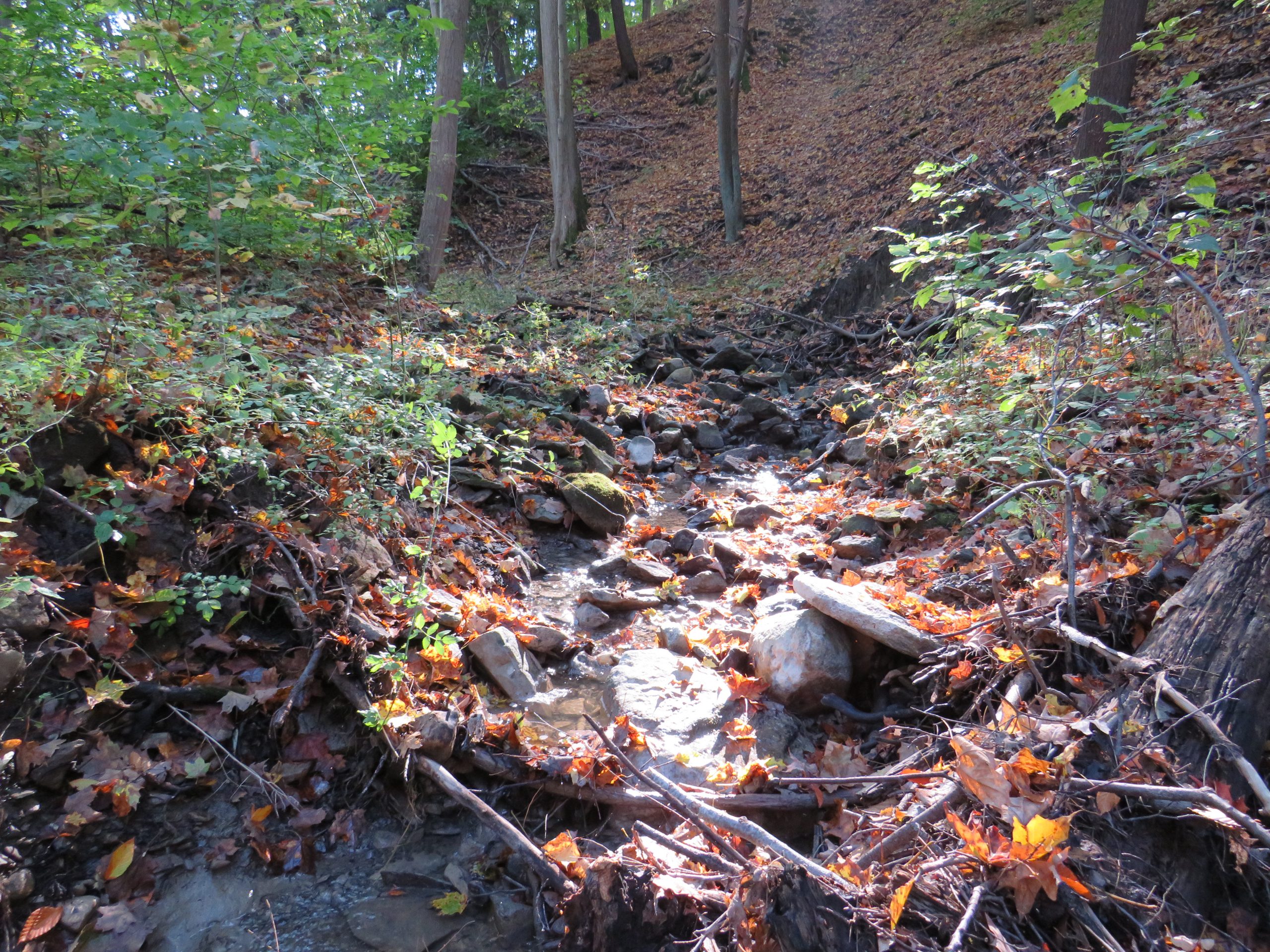
Ancaster Creek Learn more about Ancaster Creek
Ancaster Creek snakes through McMaster Forest, cutting a deep ravine that diversifies the topography of the forest and collecting precipitation that falls across the region to feed Spencer Creek and Cootes Paradise. Ancaster Creek provides habitat for numerous aquatic species, including Rainbow Trout.
McMaster Forest Flora and Fauna
McMaster Forest is home to over 1000 recorded species, with more and more species identified every year. This leads to a high species diversity of plants, insects, and birds. See how many different species you can spot next time you visit the property!
Log your observations on iNaturalist and see what fellow naturalists have observed!

Bees
With over 200 species, McMaster Forest has the largest recorded bee species diversity of any surveyed site in Ontario.
Bees are vital to sustaining ecosystems by pollinating plants.
McMaster Forest is home to one federally listed species at risk (listed as Special Concern) bee, the American Bumble Bee (Bombus pensylvanicus), and is home to 15 provincially rare bee species.
Some include:
- Trout Lily Miner Bee (Andrena erythronii)
- Beebalm Sweat Bee (Dufourea monardae)
- Orange Cuckoo Nomad Bee (Epeolus autumnalis)
- Hoary Long-horned Bee (Peponapis pruinosa)
- Buttercup Cuckoo Sweat Bee (Sphecodes ranunculi)
Photo: Pure Sweat Bee (Augochlorella aurata) on Wild Bergamot (Monarda fistulosa), by Noah Stegman
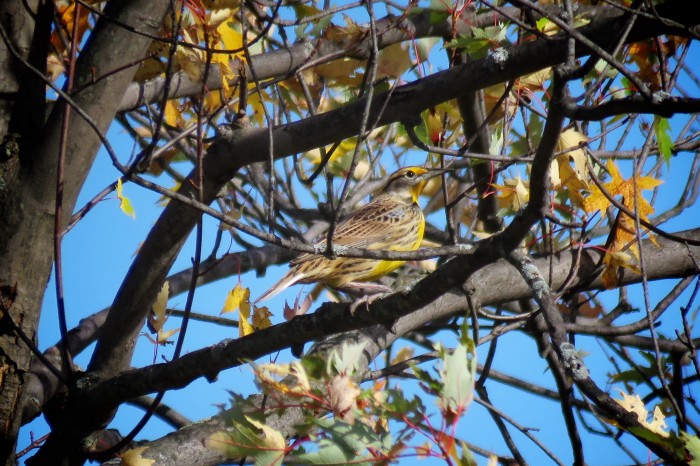
Birds
McMaster Forest has several different ecological zones (eco sites), making it an ideal bird habitat. McMaster Forest is a bird refuge in Hamilton, part of the Dundas Valley & Dundas Marsh Important Bird Area (IBA #ON005).
Over 120 bird species have been sighted on the property, although not all nest here. 12 federally listed and 13 provincially listed species at risk have been observed.
Some of these species at risk include:
- Barn Swallow (Hirundo rustica)
- Wood Thrush (Hylocichla mustelina)
- Canada Warbler (Cardellina canadensis)
- Red-Headed Woodpecker (Melanerpes erythrocephalus)
- Louisiana Waterthrush (Parkesia motacilla)
Photo: Eastern Meadowlark (Sturnella magna), by Rob Porter
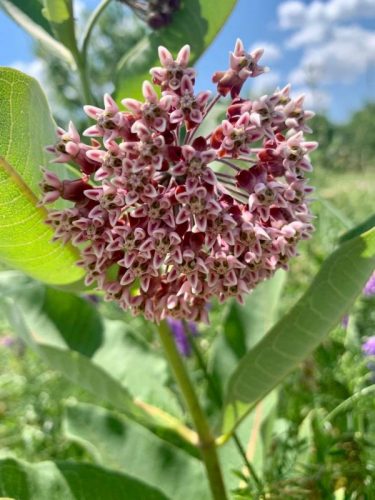
Plants
McMaster Forest has an incredible diversity of plant species, with over 400 recorded (the number of extant species likely being much higher). Many ecozones and the properties’ location within the Carolinian Zone allow for various habitats and plants, such as creeks, marshes, prairie, meadows, savannas, and forests.13 rare to the Hamilton area plant species have been identified.
Some of these species include:
- White Trout Lily (Erythronium albidum)
- Giant Yellow Hyssop (Agastache nepetoides)
- Great Angelica (Angelica atropurpurea)
- American Pokeweed (Phytolacca decandra)
- American Groundnut (Apios americana)
Photo: Common Milkweed (Asclepias syriaca), by Martha Kilian
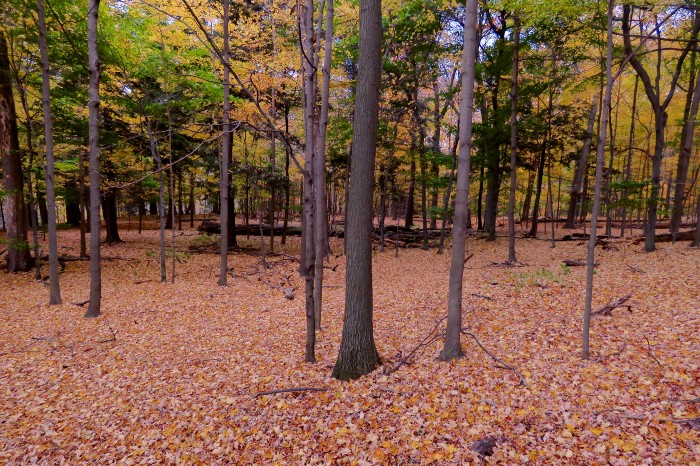
Trees
As the name suggests, McMaster Forest is filled with beautiful sprawling forests (over 60 species of trees & shrubs), including a section of old-growth forest. Old-growth forests, few of which remain in Ontario, are forests that have never been cleared or logged and are hundreds of years old. Keep your eye out for large Tulip (Liriodendron tulipifera), Sassafras (Sassafras albidum), Red Oak (Quercus rubra), Hemlock (Tsuga canadensis), and Sugar Maple (Acer saccharum) trees!
McMaster Forest is also home to two endangered and protected trees; the Eastern Flowering Dogwood (Cornus florida), which shows off its beautiful flowers every spring and Butternut (Juglans cinerea). Historically the property was home to the critically endangered American Chestnut (Castanea dentata), but it has since been extirpated from this location.
Photo: McMaster Forest, by Rob Porter
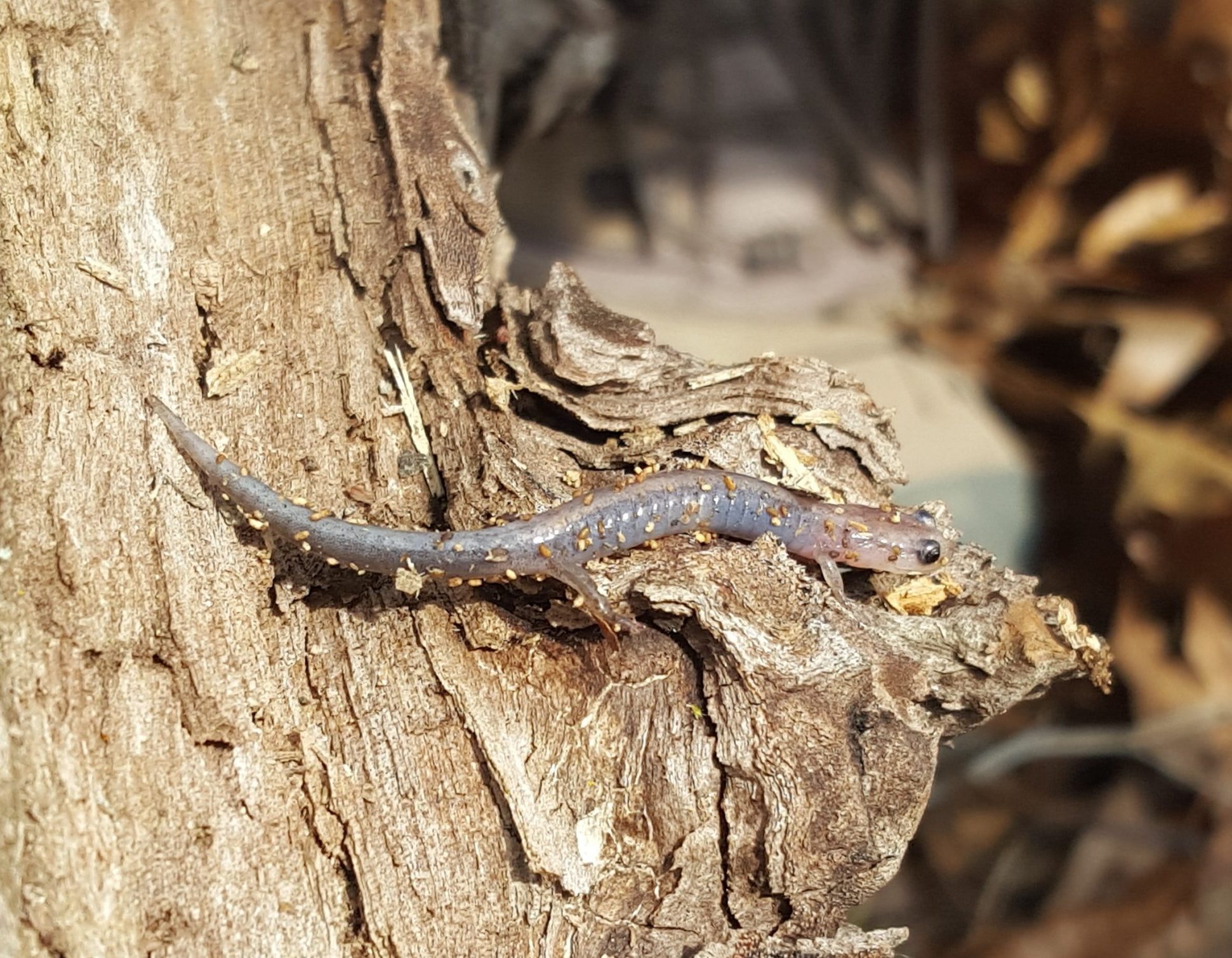
Reptiles and Amphibians
McMaster Forest is home to seven recorded amphibian and five recorded reptile species. Of these species only two, the Snapping Turtle (Chelydra serpentina) and Eastern Milksnake (Lampropeltis triangulum), are listed as federal species at risk (Special Concern).
Some of the other species found on the property include:
- Dekay’s Brownsnake (Storeria dekayi)
- Gray Treefrog (Hyla versicolor)
- Wood Frog (Lithobates sylvaticus)
- Eastern Red-backed Salamander (Plethodon cinereus)
- Spotted Salamander (Ambystoma maculatum)
Photo: Eastern Red-backed Salamander (Plethodon cinereus), by Noah Stegman
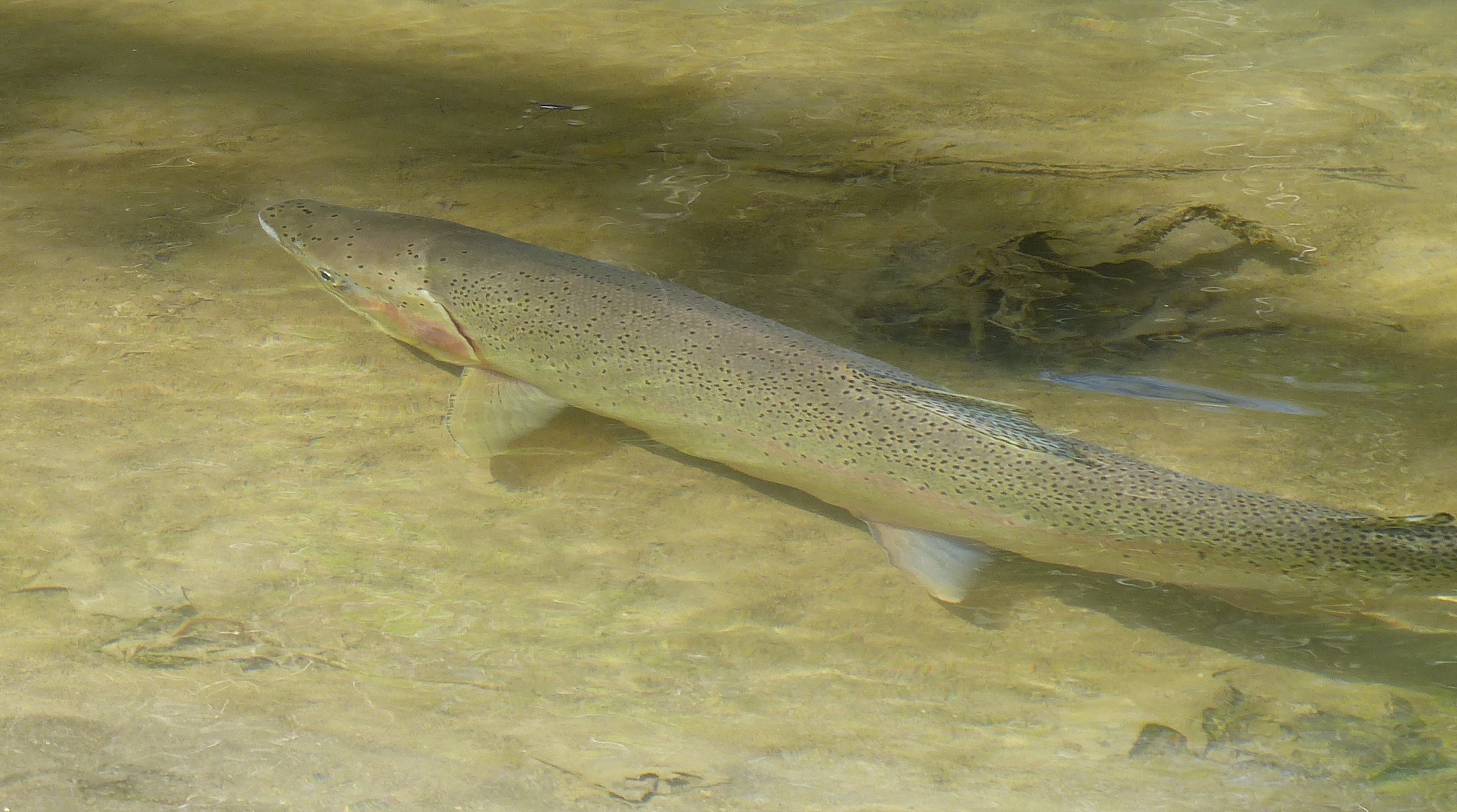
Fish
McMaster Forest has three cold water creeks flowing through the property; Ancaster Creek and two unnamed tributaries of Ancaster Creek. Cold water creeks are becoming increasingly rare in Ontario as they lose their tree cover (which cools the water) to development. Within these watercourses, 17 fish species have been identified (although there may be more).
One significant species found here is the Rainbow Trout (Oncorhynchus mykiss), although not a native species, it is an indicator of cool water and a healthy watercourse. The native Brook Trout (Salvelinus fontinalis) was likely once found in Ancaster Creek and its tributaries, but has likely been extirpated. Ongoing creek restorations by Trout Unlimited and the Hamilton Conservation Authority seek to remove blockages to fish migration and improve water quality.
Photo: Rainbow Trout (Oncorhynchus mykiss), by Ancaster Creek Biomonitoring Team 2015

Invertebrates (Excluding Bees)
Over 200 non-bee invertebrates have been identified at McMaster Forest and surrounding territories. This is a small fraction of the likely hundreds of species found across the many different ecozones on the property. This ranges from spiders & other arachnids, dragonflies & damselflies, beetles, wasps, butterflies & moths, flies, crayfish, and many more.
A notable species is the federally endangered Monarch Butterfly (Danaus plexippus).
Some of the other species found on the property include:
- Big Water Crayfish (Cambarus robustus)
- Ebony Jewelwing Damselfly (Calopteryx maculata)
- Spicebush Swallowtail Butterfly (Papilio troilus)
- Spongy Oak Apple Gall Wasp (Amphibolips confluenta)
- Six Spotted Tiger Beetle (Cicindela sexguttata)
Photo: Ground Beetle (Carabus maeander), by Noah Stegman
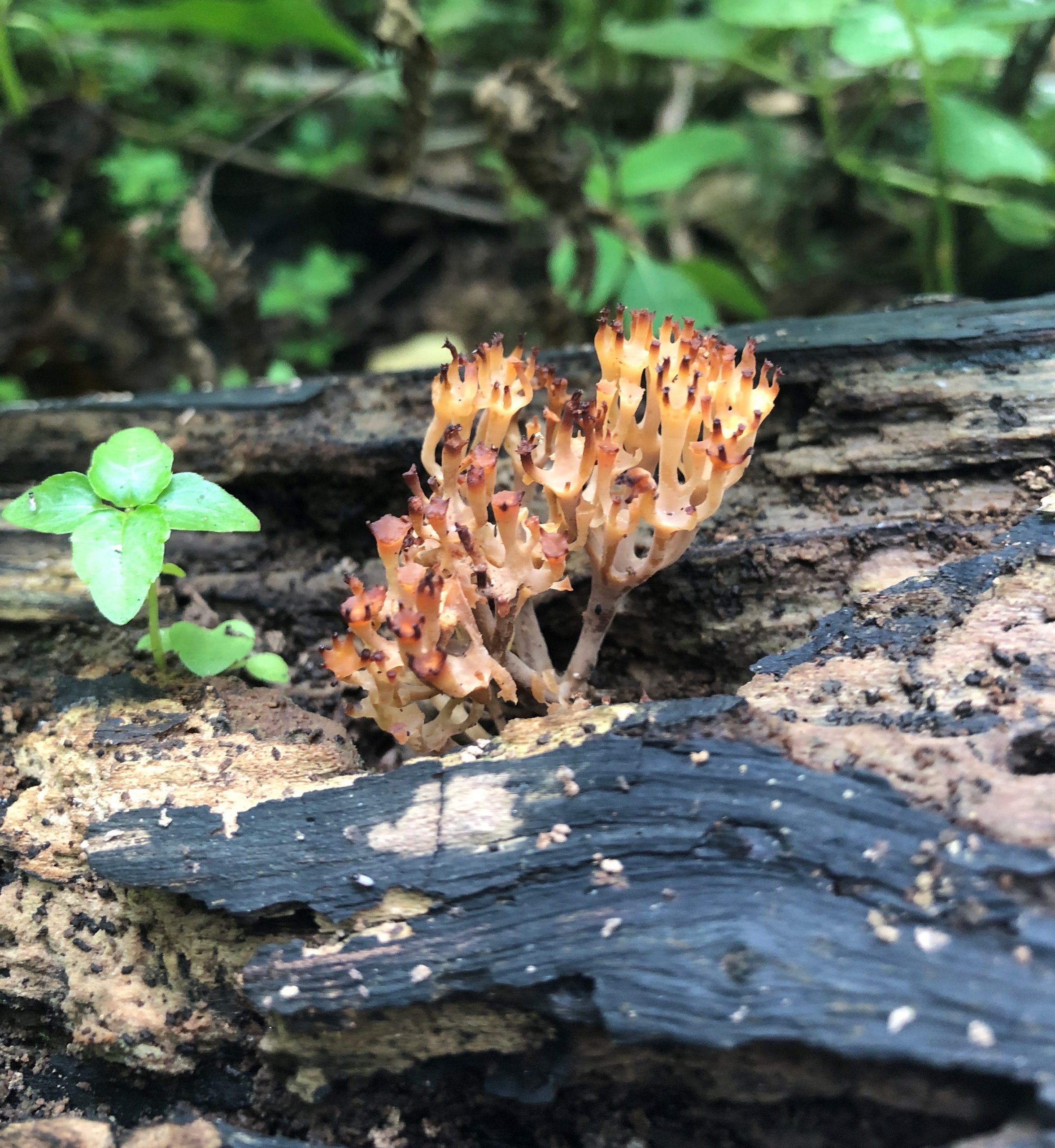
Fungi
McMaster Forest has recorded over 75 species of fungi on the property, there are likely many species yet to be identified. This includes lichens, mushrooms, rusts, leaf spots, and pathogens.
Please remember mushroom harvesting is not permitted on this property.
Some of the other species found on the property include:
- Trumpet Lichen (Cladonia fimbriata)
- Giant Puffball (Calvatia gigantea)
- Fairy Fingers (Clavaria fragilis)
- Brittle Cinder (Kretzschmaria deusta)
- Bears Head Tooth (Hericium americanum)
- Orange Berry Rust (Arthuriomyces peckianus)
Photo: Crown-tipped Coral Fungus (Artomyces pyxidatus), by Noah Stegman
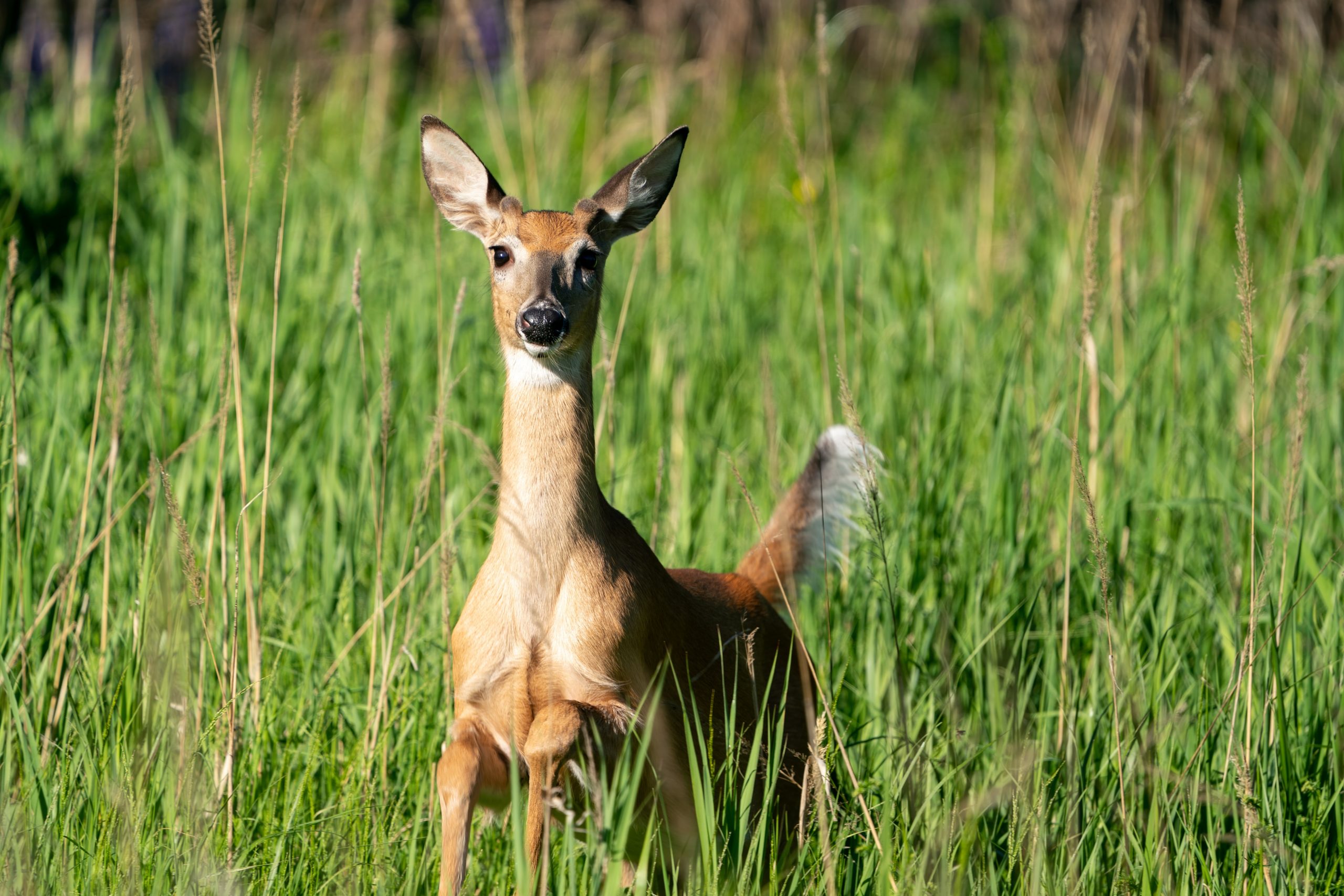
Mammals
McMaster Forest has recorded 16 mammal species on the property, but the actual number of species is likely higher.
Some of the other species found on the property include:
- Beaver (Castor canadensis)
- Coyote (Canis latrans)
- White-tailed Deer (Odocoileus virginianus)
- Woodland Jumping Mouse (Napaeozapus insignis)
- Meadow Vole (Microtus pennsylvanicus)
- Star-Nosed Mole (Condylura cristata)
Please keep dogs on leash and stay on trail when visiting the property to help protect these wonderful species.
Photo: White-tailed Deer (Odocoileus virginianus)
McMASTER FOREST ECOLOGICAL ZONES
Ecological zones (ecosites) are defined areas in a landscape that have specific plant and animal communities and environmental conditions. McMaster Forest is home to 17 different ecosites (as of the 2011 survey), which helps to maintain the high species diversity, and environmental health of the property. While hiking on the trails, see if you can distinguish each zone!
Old Growth Forest
Old growth forests are areas of intact forest that have never seen logging. Old growth Northern Red Oak (Quercus rubra), Sassafras (Sassafras albidum), Tulip Tree (Liriodendron tulipifera), Black Walnut (Juglans nigra), Eastern Hemlock (Tsuga canadensis), and Sugar Maple (Acer saccharum) on the property are some of the largest and tallest recorded in the province.
Deciduous Forest
Some characteristic species found in deciduous forests include Sugar Maple (Acer saccharum), Northern Red Oak (Quercus rubra), Ironwood (Ostrya virginiana), American Beech (Fagus grandifolia), and Musclewood (Carpinus caroliniana).
Mixed Forest
Some characteristic species found in mixed forests include Sugar Maple (Acer saccharum), Eastern Hemlock (Tsuga canadensis), Northern Red Oak (Quercus rubra), and Eastern White Pine (Pinus strobus).
Shrub Thicket
Some characteristic species found in shrub thickets include Hawthorn (Crataegus sp.), Gray Dogwood (Cornus racemosa), Common Buckthorn (Rhamnus cathartica), Black Raspberry (Rubus occidentalis), and American Blackberry (Rubus allegheniensis).
Woodland/Savanna
Some characteristic species in woodlands include a canopy of Black Walnut (Juglans nigra), Butternut (Juglans cinerea), and Staghorn Sumac (Rhus typhina), with an understory of forbs and graminoids. Woodlands are characterized by 35 – 60% canopy cover and savannas are characterized by 25 – 35% canopy cover.
Tallgrass Prairie
Some characteristic species found in tallgrass prairies include Indiangrass (Sorghastrum nutans), Switchgrass (Panicum virgatum), Big Bluestem (Andropogon gerardi), Black Eyed Susan (Rudbeckia hirta), and Wild Bergamot (Monarda fistulosa).
Graminoid Meadow
Some characteristic species found in graminoid meadows include Kentucky Bluegrass (Poa pratensis), Orchard Grass (Dactylis glomerata), Queen Anne’s Lace (Daucus carota), Birdsfoot Trefoil (Lotus corniculatus), and Tall Fescue (Festuca arundinacea).
Forb Meadow
Some characteristic species found in forb meadows include Canada Goldenrod (Solidago canadensis), Grass-leaved Goldenrod (Euthamia graminifolia), Wild Bergamot (Monarda fistulosa), Daisy Fleabane (Erigeron strigosus), and Common St. Johns Wort (Hypericum perforatum).
Mineral Marsh Meadow
Some characteristic species found in the mineral marsh meadow include Blue Vervain (Verbena hastata), Elecampane (Inula helenium), American Cornmint (Mentha canadensis), Canada Goldenrod (Solidago canadensis), and Queen Anne’s Lace (Daucus carota).

